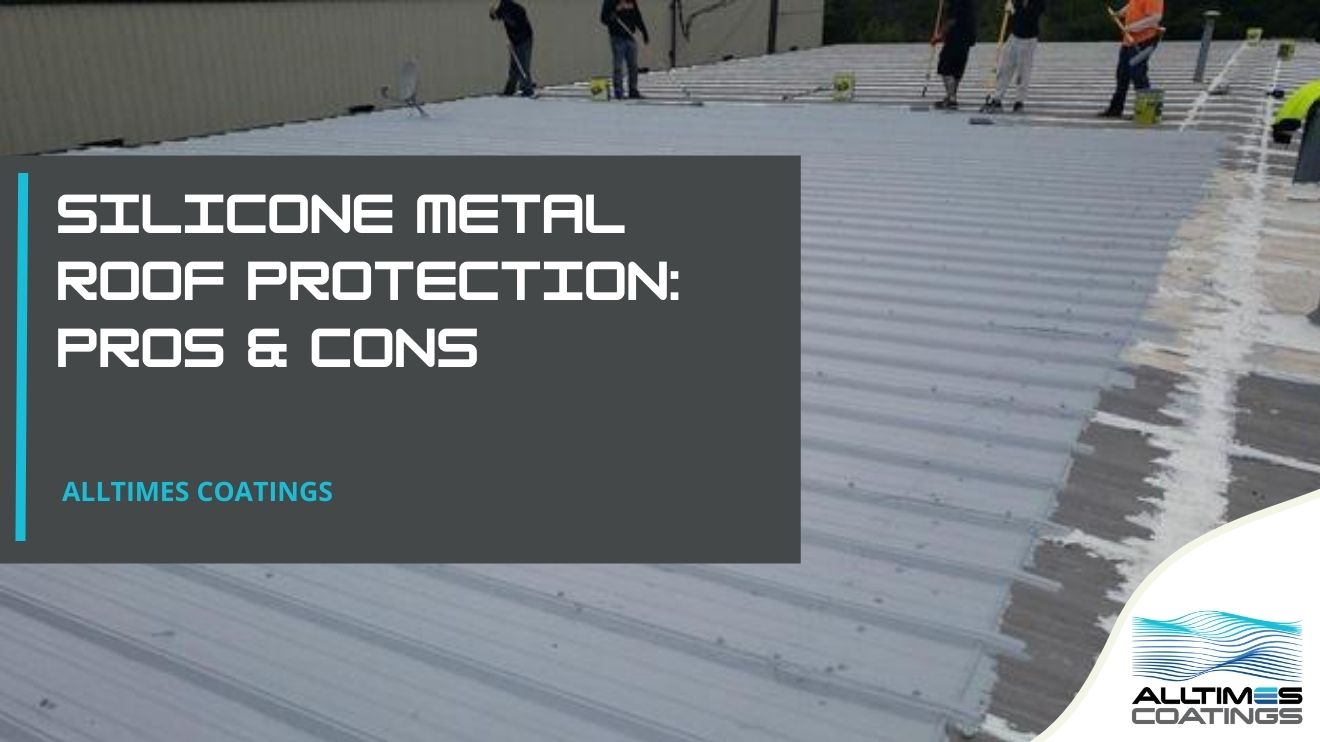Silicone Metal Roof Protection: Pros & Cons

When specifying a protective metal roof coating for your industrial or commercial roof, you may be considering silicone metal roof coatings. In this blog, we will run over what silicone roof coatings are and their pros and cons in regard to their protection, life expectancy, and environmental impact.
Whether its for dilapidations or a planned roof restoration, roof coatings and their application and resistance is paramount in protecting and ensuring the life of your metal roof. A strong and durable coating is needed and preferably one that can last decades.
The Pros Silicone Coatings
There are several benefits to silicone coatings which is why they are often specified for metal roofs. Firstly, they have good overall elasticity and weatherability. They can protect a roof well against rain and wind while the elasticity allows them to take in the inevitable movement.
Silicone coatings also have a high tolerance to thermal differences meaning the coating will not suffer from frost in the winter or degrade in hot temperatures in the summer.
The coating dries off quickly after rain which is good if there is rainfall soon after application.
The Cons of Silicone Coatings
As silicone coatings are quite a traditional roof coating, there are also several disadvantages to them, in comparison to the newer, more advanced coatings on the market.
Regarding application, silicone is notoriously difficult to apply at certain times of the day and year, mainly due to its moisture intolerance. Silicone coatings require the surface it is applied on to be bone dry. This makes it quite hard for applicators, especially in a country such as ours where damp conditions are more likely than not. This low damp tolerance can cause an issue for working schedules, slowing jobs down.
In the area of environmental issues, silicone coatings are also significantly damaging to the environment. This is because they contain volatile organic compounds (VOCs). VOCs are found in solvents which is a critical part of many paints and coatings because it makes them easy to apply and spray. However, VOCs are toxic to humans and animals, and contribute to air pollution and ground-level ozone.
Furthermore, due to silicone coatings containing VOCs, as the coating cures and the vapours are released into the atmosphere, the coating will shrink. This means appearance and thickness will reduce during curing. This is also compounded by silicone coatings’ low tensile strength which makes the coating vulnerable on parts of the roof such as the edges and gutters where maintenance might occur. This can therefore leave weaknesses for moisture to get in and corrosion to occur around these areas. It is also prone to dirt retention and we often hear of birds attacking it.
Conclusion
It’s so important to put in measures of prevention against corrosion on your metal roofs. Effective and long-lasting coating systems can save you endless time and money in the future. Implementing a coating solution with an almost impenetrable barrier to corrosion will reduce the long-term impacts rust has on your roof projects. Take a look at our previous blog all about roof coating solutions to see what options there are for your industrial metal roof.
Keen to learn more about metal roof protection? Check out our latest CPD: Rust Never Sleeps by clicking the link below or call an expert today on 01453 872850.

